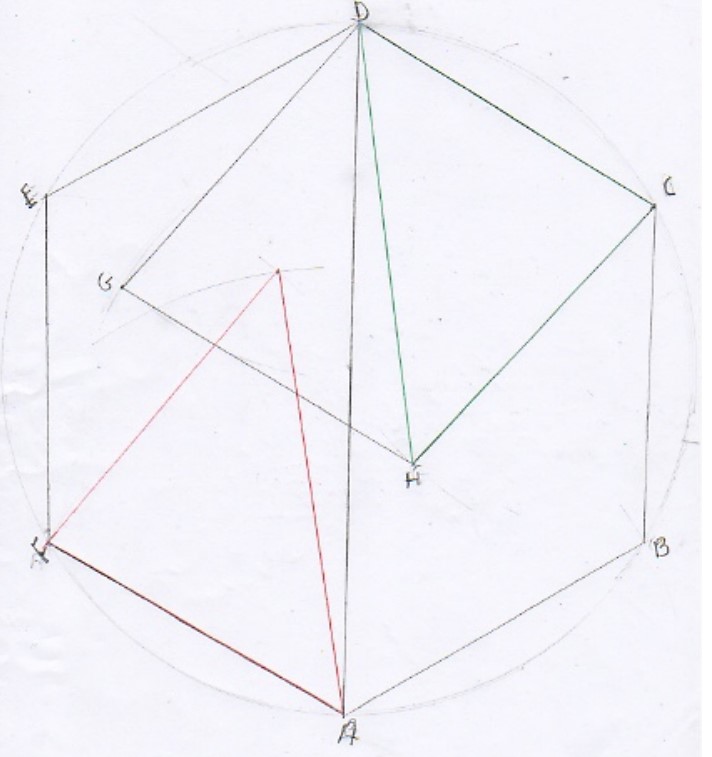The question allows drawing of lines and points. In addition, the parallelogram is already cut out. If we draw the diagonal DH, the parallelogram is cut into two equal triangles, because in parallelograms the two opposite sides are always equal and both have the same third side DH. All vertices of a regular hexagon lie on the circumference. If we draw the straight line AD without doing any cutting, this line divides the hexagon into two equal areas because point D is opposite point A. We put the two triangles DHC and DHG as shown in the drawing. The areas of the two half hexagons which are not covered by the triangles are equal.




